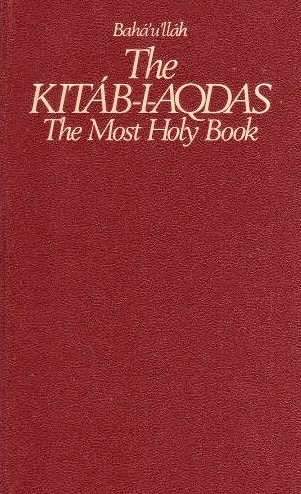| MOHAMMED REZA ISFAHANI, MAR 2008 |
| |
No debate on Babi and Bahai history is complete without an elaborate discussion on the role of Tahera Qazvini, one of Bab's 19 confidantes (or the Hurufe Hayy - Alphabets of Life as Bab chose to call them).
Tahera (born in 1230 Hijri) was an interesting character of Babi/Bahai history. That the Babis and Bahais still wish to discuss her and her enormous 'contributions' to early history of both the faiths tells us something about the high regard they have for her despite her (mis)adventures.
After reading about Tahera one would never have guessed that she came from an extremely religious and God-fearing family. She was the daughter of Mulla Muhammad Saleh, the brother of Mulla Muhammad Taqi. The latter had issued a decree (fatwa) denouncing Shaikh Ahmed Ahsai as an infidel for his twisted interpretation of physical resurrection that contravened the popular interpretation of Quran and Sunnah. This later evolved into an independent sect called Shaykhiyya.
Mulla Mohammed Taqi's brother - Mulla Saleh however, chose to follow the path of the Shaykhiyya, but was careful to conceal his inclination. His daughter - Tahera took to her father's beliefs and was just as inclined towards the Shaykhiyya.
Given the controversy surrounding the Shaykhiyya sect, Tahera was careful to conceal her beliefs. For a while she secretly attended the lectures of Sayyid Kazim Rashti (Bab's mentor) and other scholars of the Shaykhiyya.
After Bab claimed the position of "Babiyyat" or the Gate to Imam Mahdi, she undertook the leadership of the Babis in Qazvin. Soon she became the rallying point for the Babis and was in the forefront of all debates and discussions regarding the new creed. She quickly collected titles like Zarrin Taaj in additional to her more famous titles like Qurratul Ayn.
Like the other disciples of Bab, she corresponded regularly with the Bab. Her enthusiasm and proficiency with the Shaykhiyya beliefs was instrumental in being inducted among the 'Huruful Hayy' (living alphabets). This was a band of Bab's 19 earliest supporters. Of course, as far as Tahera was concerned it helped the she was a woman of exceptional beauty, which played no small role in propelling her to the heights fame (or infamy) that she was to achieve later.
In an age where surgical enhancements were unheard of, her intoxicating beauty and her full bodied figure were indeed noteworthy, a fact noted by the most renowned Babi and Bahai scholars.
Mirza Abul Fazl Golpaygaani in his book 'Kashful Ghitaa' (pg. 96) and Naimat Baizaai in his book 'Tazkeratul Shoraae Bahai' (volume 3, page 75) and Abdul Husain Aaawaareh in his book 'Kawkabud Durree' (volume 1, page 11) have documented that Qurratul Ayn (one of her most famous titles) was very popular in Qazvin for her stunning looks. She had the luscious cheeks worthy of a Hoor with silky skin to match. She was an enchanting beauty, who with her enigmatic smile used to preach energetically, first about the teachings of Shaykhiyya and then Babism. The most difficult of debates and discussions were won over easily with these 'weapons of mass influence'. Often, fence sitters who were undecided about Shaykhiyya and the Babi Faith, once they encountered her, needed little coaxing, being only too glad to enroll in any movement associated with her.
(Refer Talkhis-e-Taarikh-e-Nabeel Zarandi on page 265 by Sayyid Muhammad Golpaygaani. The author was a charming youth who after being closely associated with Qurratul Ayn was given the title of 'Fat-al Maleeh' - The beautiful youth)
Mirza Muhammed Taqi Lisaanul Mulk writes about Qurratul Ayn: 'This lady of captivating beauty, lustrous hair and alluring fragrance was an expert in Arabic, knowledge of Quranic verses and traditions. Combine this with the frenzy about Babism and Qurratul Ayn's own 'fan base' and you had a gradual but very noticeable tilt towards the new order (The Babi Faith) which claimed to abrogate Islam. Soon the Islamic veil (Hijaab) became a punishable offence and it was made highly recommended for one woman to marry no less than nine men. The vagrant followers of Bab, since they did have any family ties, rallied earnestly around Qurratul Ayn (the idea of one woman for nine men was extremely appealing to them) and lavished her with several titles like 'Durrul Dojaa' - The pearl of light and 'Shamsul Zohaa' - The moon of brilliance, but the title that stuck was 'Qurratul Ayn' (Coolness of the eyes).
Her assemblies resembled a bridal chamber and she the bride. She was decked out to look the part of a beautiful peacock in heaven. She called for Bab's cloak and wrapped it around herself to remind the audience of her close association with Bab and his creed. She wore no veil of course, so that the spectators could ogle at her without any impediments. She initially addressed the assembly seated on the throne made especially for the bride.
Read More on The Event of Badasht
Then akin to the preachers sermonising about heaven and hell, she quoted Quranic verses and traditions at length warning the audience about the horrors of hell and the bounties of paradise. And finally akin to a porn star she promised liberation from hell fire to all those who touched her body. Not surprisingly, her invitation had the desired effect on the spectators, most of which embodied the typical hot-blooded youth looking for instant nirvana. There was a mad rush of men converging on Qurratul Ayn so as to touch her and get relief from the fire of hell. They kissed her lips, which resembled red rubies. Those who wished for a higher form of liberation weren't going to be satisfied by just that. They moved lower to anxiously rub their faces against her cool breasts to ward off the heat of the fire of hell. And then there were others who weren't certain of their liberation even after this.
(Naasikhut Tawaarikh volume 3, page 219)
All in all, her spiritual discourses resembled scenes right out of a porn video, the only difference being that the protagonist in this case claimed to represent the prophet of Allah (as also the Bab of the Promised Mahdi, the Promised Mahdi himself and eventually the Almighty Himself).
Read More on The Claims of The Bab
Conclusion
1) For an order claiming to abrogate Islam, Qurratul Ayn was a poster girl the Bahais should be ashamed of. However, a Harful Hayy that she was, Bahais can hardly claim to dissociate from the one who Bab himself chose to associate with so closely. Writings from the early history of Babism indicate that Qurratul Ayn had Bab's endorsement and he expected his female followers to take her as a model.
2) While there is no problem per se if Qurratul Ayn was a model for the women of the Babi Faith, it makes Bab's claim that he had abrogated Islam even more incredulous. Allah abrogates the existing order with a superior or at least an equal order (Surah Baqarah, verse 106), so how Qurratul Ayn's shining example could abrogate the ethics and morals of Islam and its model for women is beyond basic human reasoning.
3) A point worth noting from Qurratul Ayn's spiritual discourses is that the concept of heaven and hell in early Babi history had a connotation in line with the Islamic interpretation which was very different from what the Bahais claimed. Heaven was something that people aspired to enter and hell frightened the daylights out of them; these were real, physical entities that were granted to people on the Day of Judgement based on their actions. If that was not the case then Qurratul Ayn's promise of liberation from the fire and promise of paradise would not have had the desired effect on her audience. The Bahai interpretation of the Day of Judgement, heaven and hell only developed at a later stage when they were cornered on that front.
The Bab - Life and Times
blog comments powered by Disqus
![]() |
|  GET RSS
GET RSS
 A FREE ONLINE MAGAZINE ON THE EVENTS IN THE WORLD OF BAHAIS A FREE ONLINE MAGAZINE ON THE EVENTS IN THE WORLD OF BAHAISCLICK TO SUBSCRIBE |

